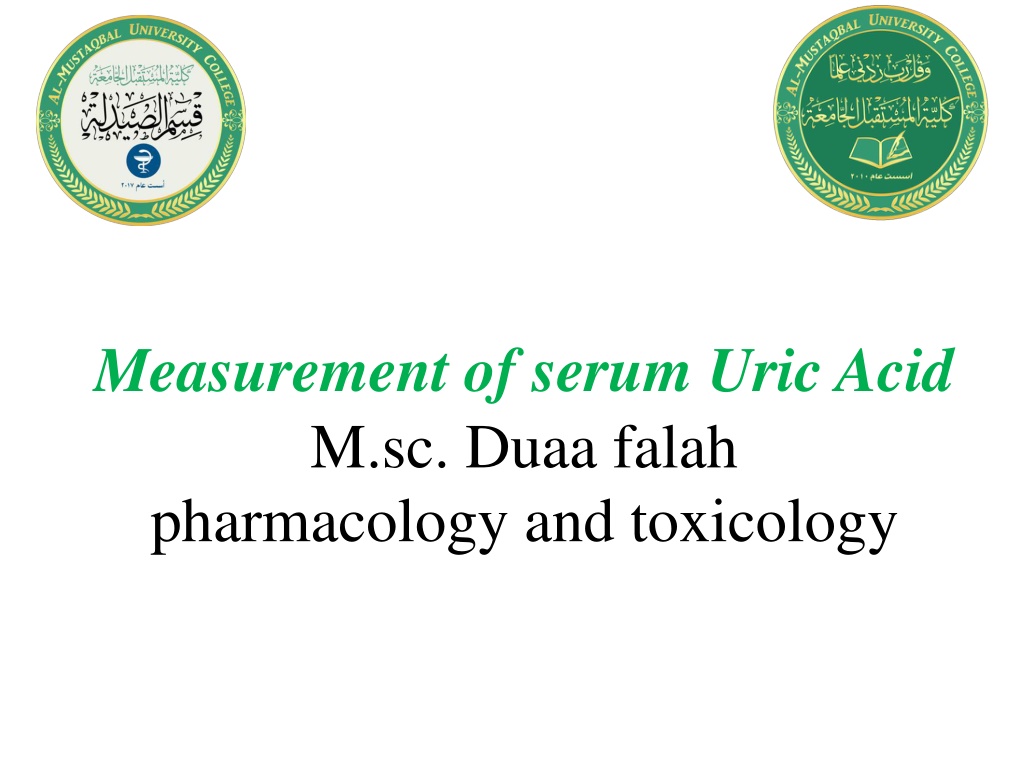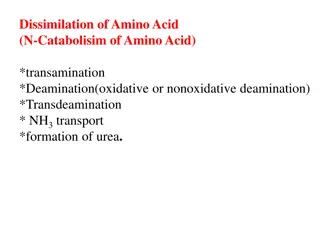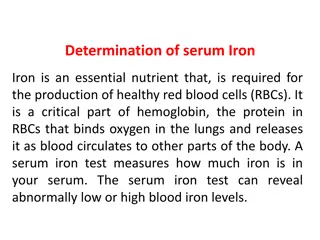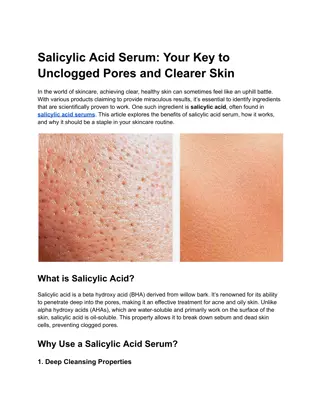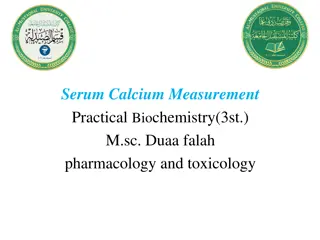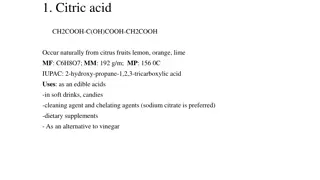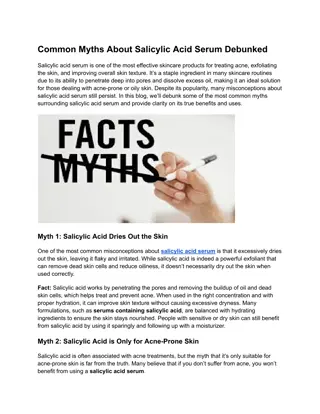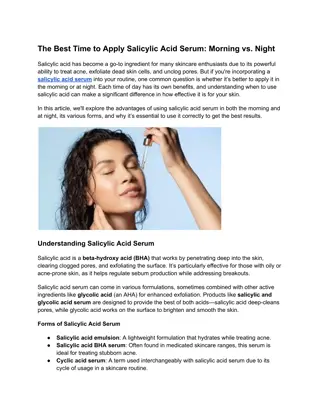Understanding Serum Uric Acid Levels and Hyperuricemia
Serum uric acid is a crucial marker of purine metabolism, with elevated levels indicating hyperuricemia which can lead to conditions like Gout. The measurement of serum uric acid helps in diagnosing hyperuricemia, with serum being the preferred specimen for testing. Various factors such as diet, gender, and medications can affect uric acid levels, making accurate measurement essential. Methods like the chemical phototungstic acid method and enzymatic uricase methods are used for estimation. Knowing the uric acid level in the body aids in identifying and managing hyperuricemia-related conditions like Gout.
Download Presentation

Please find below an Image/Link to download the presentation.
The content on the website is provided AS IS for your information and personal use only. It may not be sold, licensed, or shared on other websites without obtaining consent from the author. Download presentation by click this link. If you encounter any issues during the download, it is possible that the publisher has removed the file from their server.
E N D
Presentation Transcript
Measurement of serum Uric Acid M.sc. Duaa falah pharmacology and toxicology
Uric acid It is the final breakdown product of purine metabolism. it circulates in the plasma as sodium urate and is excreted by the kidney. It is derived from nucleic acid that are ingested or come from destruction of tissue cell .
Nucleic acid are of two types: Purine and Pyrimidine. The Catabolism of these Purine, Adenine and guanine produce uric acid. After breakdown of nucleic acid the uric acid formed is transported to the liver, blood then is filtered through the glomerular filtrate and appear in the urine.
hyperuricemia Elevated levels of uric acid concentration, it can be due to increase urate formation or decrease excretion. Purine --- liver----xanthine ---uric acid- -- blood urate --- kidney --excreted in urine
GOUT Hyperuricemia can lead to disease condition called Gout. Gout is a clinical syndrome characterized by hyperuricemia nad acute arthritis . acute gout tat by deposition of sodium urate crystals which cause inflammation s/s pain and inflammation of joints.
OBJECTIVE. To know the uric acid level in the body. To diagnose a case of hyperuricemia.
SPECIMEN Serum is the best, heparinized plasma can be used. lipemic and increased bilirubin sample should be avoided. Also drugs such as thiazide and salicyclate cause elevation in uric acid. uric acid levels are effected by diet --- increased ingestion of red meat which is rich in nucleic acid purine. Urate concentration is higher in male then in female. Serum should be separated quickly as uric acid is related to cellular breakdown of RNA and DNA.
METHOD USED a) chemical method --- phototungstic acid method b) enzymatic ---- uricase methods.
Estimation of uric acid in blood serum Principle: a) Enzymatic estimation of uric uses a reagent containing two enzymes and a chromogen. Uric acid is oxidized by uricase to allantoin and hydrogen peroxide. b) uric acid + O2 + 2 H2O uricase allantoin + CO2 + H2O2 c) Hydrogen peroxide in the presence of peroxidase allows oxidative copulation of chromogens to yield a coloured compound suitable for the photometric determination.
2. Mix properly and incubate in the thermoblock for 2 min at 37 C. 3. Measure the absorbances of the sample and the standard at 550 nm against the blank .
Reference Value Male 3.4 ---- 7 mg /dl . Female 2.4 ----5 mg /dl URINE . 250 750 mg /dl interpretation of result Causes of elevated level of uric acid .
